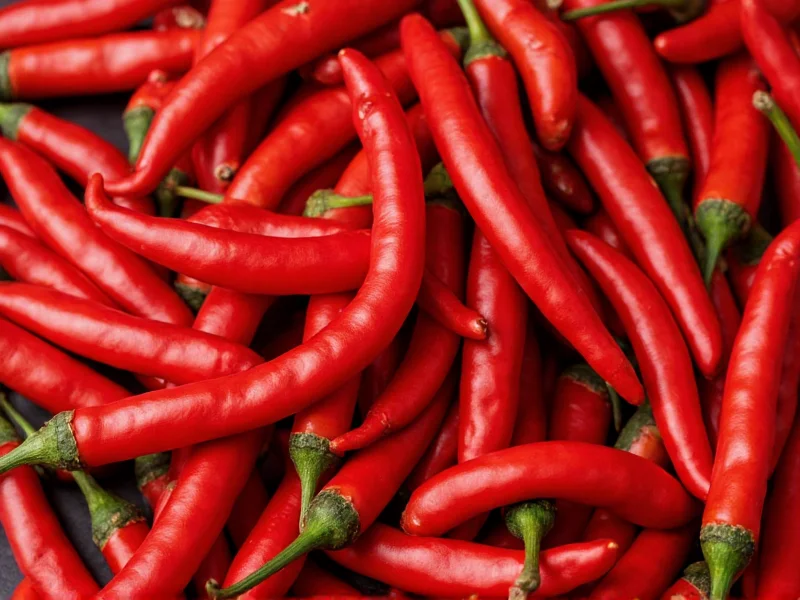What Exactly Is Chile Japones?
Chile Japones (chile japonés in Spanish) is a thin, pointed chili pepper commonly used in Mexican cuisine. Despite the name suggesting Japanese origins, it’s entirely Mexican. The “Japones” designation describes its visual similarity to certain Asian chili varieties—long and narrow like some Japanese peppers—rather than geographic origin. Botanically classified as Capsicum annuum, it measures 2–3 inches long with smooth, glossy skin that ripens from green to vibrant red.
Decoding the Spicy Level: Scoville Scale Analysis
Chile Japones registers between 15,000 and 30,000 Scoville Heat Units (SHU), firmly positioning it in the medium-hot range. To contextualize this chile japones spicy level:
| Pepper Variety | Scoville Heat Units (SHU) | Relative Heat Comparison |
|---|---|---|
| Chile Japones | 15,000–30,000 | Baseline for comparison |
| Serrano | 10,000–23,000 | Slightly milder on average |
| Habanero | 100,000–350,000 | 3–10x hotter |
| Jalapeño | 2,500–8,000 | 2–6x milder |
Several factors influence actual chile japones heat intensity:
- Growing conditions: Soil quality, climate, and water stress significantly impact capsaicin production
- Ripeness: Red-ripe peppers typically run hotter than green immature ones
- Plant genetics: Natural variation exists between individual peppers
- Preparation method: Removing seeds and membranes reduces perceived heat by 60–80%
Culinary Applications Based on Heat Level
Chefs leverage chile japones spicy level characteristics in specific applications. Its medium heat with bright, grassy notes makes it ideal for:
- Salsas and hot sauces: Provides noticeable heat without overwhelming other flavors
- Marinades: Penetrates proteins effectively due to moderate capsaicin levels
- Stir-fries: Withstands high-heat cooking better than extremely hot varieties
- Pickled preparations: Retains crisp texture while imparting gradual heat
When substituting chile japones, consider these alternatives based on desired heat intensity:
- For milder results: Use jalapeños (remove seeds) or poblano peppers
- For similar heat: Serranos work well but offer brighter acidity
- For increased heat: Thai bird chilies or cayenne peppers provide comparable burn
Common Misconceptions About Chile Japones
Several persistent myths surround this pepper’s chile japones spicy level and origin:
- “It’s Japanese in origin:” The name describes shape similarity, not provenance. No historical connection to Japan exists.
- “All Chile Japones are equally hot:” Significant variation occurs between crops and even individual peppers.
- “It’s the same as Korean chili flakes:” While both appear in Asian-inspired dishes, gochugaru typically ranges 4,000–8,000 SHU—much milder than chile japones.
- “Drying reduces heat significantly:” Dehydration concentrates capsaicin, often increasing perceived heat by 20–30%.
Practical Tips for Handling Chile Japones
Managing chile japones spicy level requires specific techniques:
- Always wear gloves when handling—capsaicin transfers easily to skin
- Remove seeds and white membranes for 60% heat reduction
- Balance heat with dairy (yogurt, sour cream) or acidic components (lime juice)
- Start with half a pepper in recipes, adjusting after 10 minutes of cooking
- Never use near open flames—capsaicin vaporizes and becomes airborne











 浙公网安备
33010002000092号
浙公网安备
33010002000092号 浙B2-20120091-4
浙B2-20120091-4